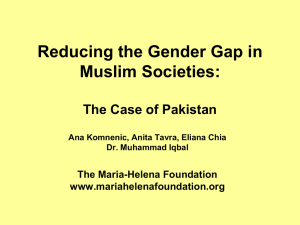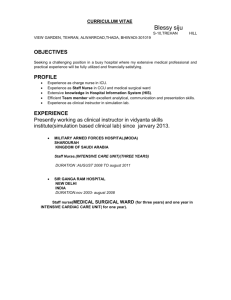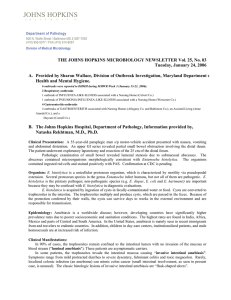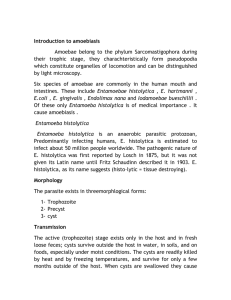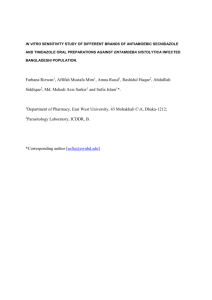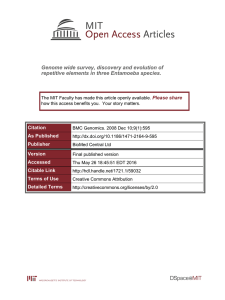18153
advertisement
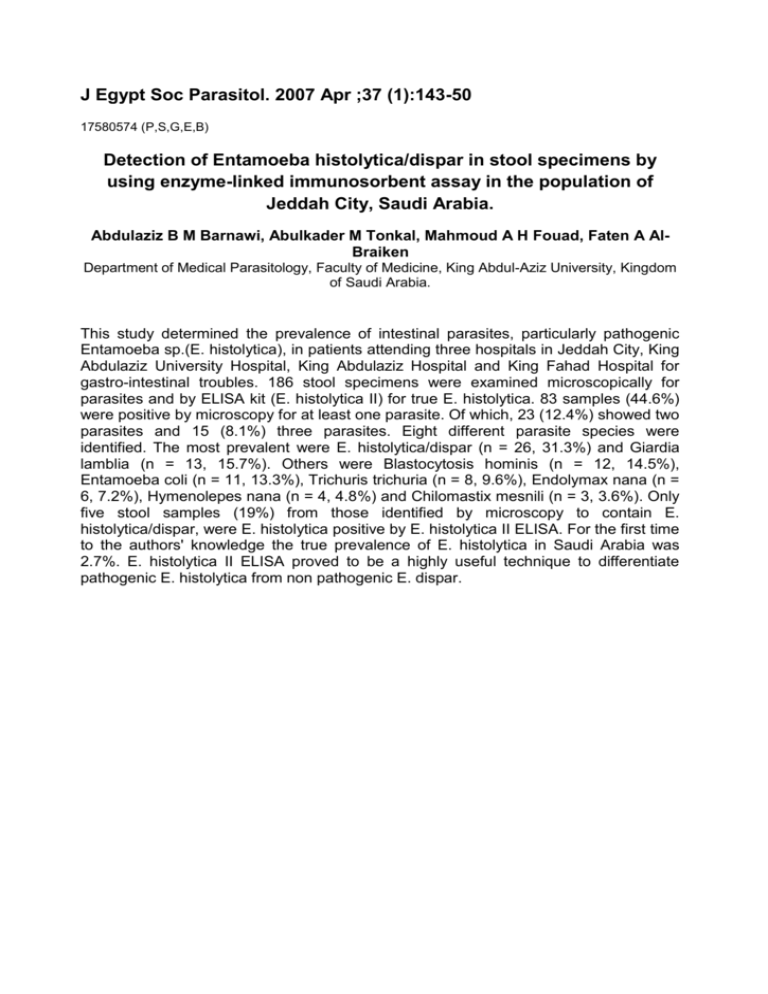
J Egypt Soc Parasitol. 2007 Apr ;37 (1):143-50 17580574 (P,S,G,E,B) Detection of Entamoeba histolytica/dispar in stool specimens by using enzyme-linked immunosorbent assay in the population of Jeddah City, Saudi Arabia. Abdulaziz B M Barnawi, Abulkader M Tonkal, Mahmoud A H Fouad, Faten A AlBraiken Department of Medical Parasitology, Faculty of Medicine, King Abdul-Aziz University, Kingdom of Saudi Arabia. This study determined the prevalence of intestinal parasites, particularly pathogenic Entamoeba sp.(E. histolytica), in patients attending three hospitals in Jeddah City, King Abdulaziz University Hospital, King Abdulaziz Hospital and King Fahad Hospital for gastro-intestinal troubles. 186 stool specimens were examined microscopically for parasites and by ELISA kit (E. histolytica II) for true E. histolytica. 83 samples (44.6%) were positive by microscopy for at least one parasite. Of which, 23 (12.4%) showed two parasites and 15 (8.1%) three parasites. Eight different parasite species were identified. The most prevalent were E. histolytica/dispar (n = 26, 31.3%) and Giardia lamblia (n = 13, 15.7%). Others were Blastocytosis hominis (n = 12, 14.5%), Entamoeba coli (n = 11, 13.3%), Trichuris trichuria (n = 8, 9.6%), Endolymax nana (n = 6, 7.2%), Hymenolepes nana (n = 4, 4.8%) and Chilomastix mesnili (n = 3, 3.6%). Only five stool samples (19%) from those identified by microscopy to contain E. histolytica/dispar, were E. histolytica positive by E. histolytica II ELISA. For the first time to the authors' knowledge the true prevalence of E. histolytica in Saudi Arabia was 2.7%. E. histolytica II ELISA proved to be a highly useful technique to differentiate pathogenic E. histolytica from non pathogenic E. dispar. J Egypt Soc Parasitol. 2006 Dec ;36 (3):737-48 17153692 (P,S,G,E,B) Detection of malaria in Saudi Arabia by real-time PCR Manal B Jamjoom, Esam A Azhar, Abdul-Kader M Tonkol, Saeed A Al-Harthi, Ibrahim M Ashankyty Department of Medical Parisitology, Faculty of Medicine, King Abdulaziz University, Jeddah, Saudi Arabia. mjamjoom@kau.edu.sa Malaria transmission occurs in Saudi Arabia and mainly endemic in the lowlands of Asir region, the Southwester Province. Imported cases have been reported. Sensitive routine laboratory techniques for rapid and accurate malaria diagnosis are therefore desirable to facilitate the identification of individuals infected with the malarial parasites and to follow up the progress of treatment of such cases with appropriate drugs. Traditional diagnosis, based on the microscopic examination of Giemsa-stained thick and thin films remains the main standard method of diagnosis used for malaria diagnosis in Saudi Arabia. Molecular diagnostic techniques based on the detection of nucleic acids (as PCR; Real-time PCR) are now highly considered. Real time-PCR a new methodology has been recently applied to detect human malaria. In this study a total of forty four samples, using whole-blood, dried blood and thick smears were examined by PCR and Real-time PCR. Both techniques showed a higher sensitivity than the microscopy. Parasites were detected in twenty nine samples out of forty four, compared to twenty six of thirty nine were positive with thin blood film. The real-time PCR assay offers a practical and positive alternative for rapid and accurate diagnosis for malaria infection. The application of such technique will be significantly valuable especially for screening for malaria infection in endemic areas. J Egypt Soc Parasitol. 2005 Apr ;35 (1):167-80 15881004 (P,S,G,E,B) Early post-treatment immunoglobulin profile in human schistosomiasis. Amany A Abd El-Aal, Maha H El-Arousy, Asma'a M El-Gendy, Abdel-Kader Tunkul, Soheir A Ismail, Ayman A El-Badry Department of Parasitology, Faculty of Medicine, Cairo University, Cairo, Egypt. In a trial at determining the most relevant immunoglobulin isotype that could reflect success of praziquantel treatment, an ELISA using soluble egg antigen (SEA) was applied on sera of Egyptian patients suffering from active intestinal schistosemiasis without hepatic complications, determining the levels of IgE, IgA, IgM, IgG1, IgG2, IgG3 and IgG4 raised against the SEA, both, pre- and early post-treatment. The positive results obtained to all anti-SEA immunoglobulin isotypes before treatment support the usefulness of this technique in the diagnosis of schistosomiasis. Except for IgG3 subclass, a statistically significant correlation was found between egg output-reflecting intensity of infection- and the different immunoglobulin levels, especially anti-SEA IgG4. When repeating the assay 5-6 months after treatment, the immunoglobulin levels showed either a rise (in case of IgE) or a drop (in case of IgA, IgM & IgG1-4), all of statistical significance, yet, IgG1-4 were still positive. So, ELISA could not give a definite indication of cure after anti-bilharzial treatment. IgE, IgG2 and IgG4 were revealed to be the most significant immunoglobulin isotypes at the post-treatment level, both statistically and due to their implications on resistance/ susceptibility to re-infection and also due to the correlation of IgG4 with the tendency to develop periportal fibrosis. Conclusively, although not having defined a particular Ig isotype as marker for cure, yet it exposed the urge for early post-treatment determination of IgE and IgG4 isotypes, which could serve as markers for picking up high risk patients susceptible to reinfection or liable to develop bilharzial periportal fibrosis, and who might benefit from a second course of specific treatment. J. of Al-Azhar Medical Faculty (Girls), Vol. 26, No. 1,(January) 2005, ISSN 1110-2381 "Preliminary Study on the Effect of Ziziphus spina Christi. On Selected Leishmania spp.", A. M. Tonkal, H. S. Salem, M. B. Jamjoom, A. M. Altaieb and H. A. Al-Bar, Preliminary Study on the Effect of Ziziphus spina Christi. On Selected Leishmania spp دراسة أولية عن تأثير نبات السدر على بعض طفيليات الليشمانيا Document Language : Arabic Abstract : Please see attache file Publishing Year : 2005 AH Added Date : Friday, June 13, 2008 Researchers A. M. Tonkal Researcher Halbar@kau.edu.sa عبد القادر تنكل M. B. Jamjoom Researcher Halbar@kau.edu.sa منال جمجمو A. M. Altaieb Researcher Halbar@kau.edu.sa ألطاف طيب H. S. Salem Researcher halbar@kau.edu.sa هالة سالم كامل البحث المنشور باللغة اإلنجليزيةPreliminary Study on Zizphus effect.doc doc كامل البحث المنشور باللغة العربية.doc doc دراسة أولية حول تأثير نبات السدر J Egypt Soc Parasitol. 2005 Dec ;35 (3):809-18 16333890 (P,S,G,E,B) Cell death pattern in cerebellum neurons infected with Toxoplasma gondii Samar el-Sagaff, Hala Said Salem, Wafa Nichols, Abdel Kader Tonkel, Najlaa Y A AboZenadah Department of Anatomy, Faculty of Medicine, King Abdel Aziz University, Jeddah, Saudi Arabia. There is a demand for studying the role of Toxoplasma gondii in cell death seeking aiding prevention of the disease. The neuro-pathological changes in the cerebellum cortex in case of acquired toxoplasmosis had been studied. Adult Balb C mice were infected by intra peritoneal injection of T. gondii RH strain. Immuno-histochemical expression of pro apoptotic marker Bax had been applied in parallel with Hematoxylin and Eosin stain to study the layers of cerebellum cortex. The focal necrosis in the cerebellum was expressed. Necrosis was explained on the basis of hypoxic ischemia resulting from existing vasculitis followed the infection. Purkinje cell layer was markedly affected in the form of disfiguring and focal loss of cells with apoptotic and necrotic changes. Thinning of both the molecular and internal granular layers was recorded morphometricly. Morphometric study reveals non significant change in the ratio between the viable to non viable cells in all cerebellum layers among experimental and control groups though the Purkinje cell layer was mostly affected. Statistical significant changes in depth proportion of molecular layer: Internal granular (ML: IGL) layers was noted in experimental and control group (p= .05). Bax expression was not coexisting with the result of H & E stained cells. The hypothesis emphasizes that toxoplasmosis resist apoptosis seeking its benefit, and apoptosis followed toxoplasmosis may be due to another protein rather than Bax. Clinical and Experimental Immunology: Volume 137 (1) July 2004 p19-23 Mast cells at the host-pathogen interface: host-protection versus immune evasion in leishmaniasis SAHA, B.*; TONKAL, A. M. D. J.†; CROFT, S.†; ROY, S.‡ *National Centre for Cell Science, Ganeshkhind, Pune, India ‡Indian Institute of Chemical Biology, Kolkata, India †London School of Hygiene and Tropical Medicine, London, UK SUMMARY Infection of a susceptible host with Leishmania, a protozoan parasite, causes the disease leishmaniasis, which is characterized by neutrophil, eosinophil, macrophage, lymphocyte and mast cell infiltration into the infected tissue followed by parasite growth. Although the roles played by other cells in leishmaniasis are known, the role of mast cells remains to be ascertained. Here, we demonstrate that Leishmania regulates mast cell infiltration to the site of infection, mast cell production and mast cell function resulting in differential growth of the parasite in resistant (C57BL/6 or CBA/T6T6) and susceptible (BALB/c) macrophages. An interleukin-3-dependent augmentation in mast cell committed progenitors is observed in BALB/c but not in C57BL/6 mice during Leishmania infection. The mast cell supernatants inhibit IFN-γ-dependent restriction of Leishmania growth in macrophages in BALB/c mice whereas the reverse phenomenon occurs in C57BL/6 mice. Our data reveals a different facet of host-pathogen interaction. Copyright © 2004 Blackwell Publishing Ltd.

